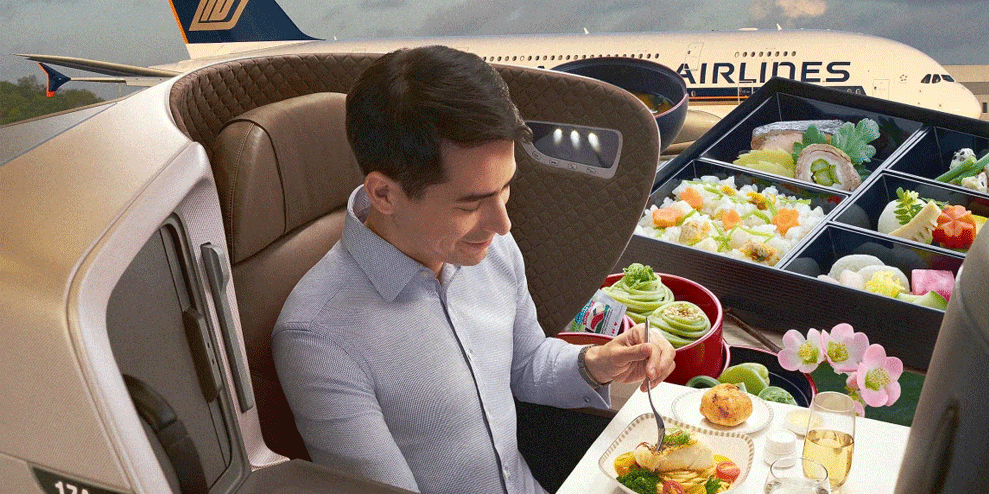When the pandemic struck, air travel ground to a halt as people felt unsafe flying and borders were restricted. In the U.S. alone, the four largest airlines lost $10 billion in the second quarter. To stop the bleeding, some airlines are now coming up with creative ideas to generate revenue. Singapore Airlines, which experienced a 99.5% drop in passengers during its first quarter, is turning two aircrafts into pop-up restaurants for two weekends in October and November. Tickets sold out in 30 minutes.
The concept of asking people to pay for airplane food might seem audacious, particularly given the paltry state of dining on most American airlines. But Singapore Airlines’ in-flight experience is legendary. Travel + Leisure has voted it the best international airline for 25 years in a row, and meals across all classes are designed by world-class chefs. So it makes sense that fans of the airline would be willing to pay for a gourmet meal, especially if they were already nostalgic for air travel.
Customers had the option of buying tickets in different classes, with a meal in a first class suite priced at $474 compared to an $39 economy class meal. Both meals will take place on planes at Singapore’s Changi Airport, which is the company’s hub. The airline says it will enforce social distancing, using only half of the 471 seats on the plane.
This isn’t the first time Singapore Airlines has experimented with new channels for its catering services. In late September, it launched meal kits that would bring First and Business Class dining into peoples’ homes, priced between $308 and $479. The service came with cooking instructions along with a customized playlist. If you wanted to upgrade the experience, you could pay extra to buy the tableware served on-board (from Wedgwood or Lalique) and even hire a chef who could cook and plate the meal for you at home.
Many other companies in the airline sector are trying to find ways to make money. In-flight catering companies like Tamam Kitchen in Israel and Gate Gourmet in Australia began offering food delivery to families stuck at home. Eva Air and Quantas offered “Flights to Nowhere,” allowing passengers to pay for a flight that would go on a scenic route, but end up in the same airport they left from. The flights attracted customers who needed an escape from mundane pandemic life, but climate activists argued that these flights were needlessly spewing carbon into the atmosphere.
Singapore Airlines’ efforts to generate revenue won’t cover its losses, which were about $825 million in the quarter ending June 30. Only 32 planes in its 220-strong fleet are currently in operation. But it makes sense for the company to stay connected to its customers during this period of reduced travel and get them excited to fly again when it’s safe enough to do so.
This article first appeared in www.fastcompany.com
Seeking to build and grow your brand using the force of consumer insight, strategic foresight, creative disruption and technology prowess? Talk to us at +971 50 6254340 or mail: engage@groupisd.com or visit www.groupisd.com/story

